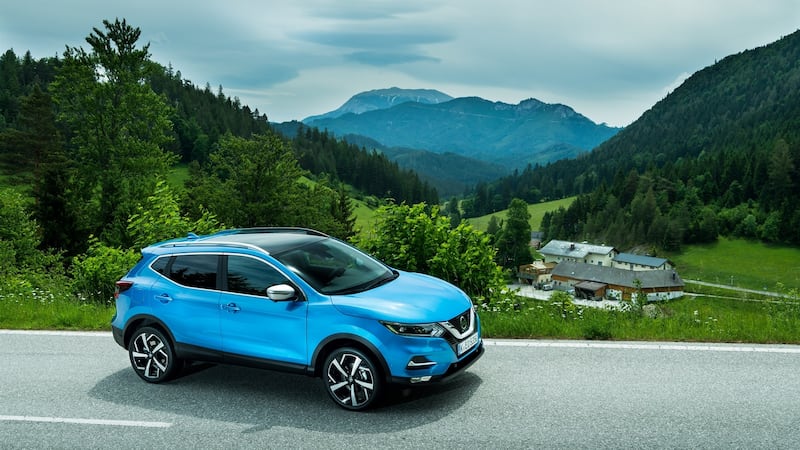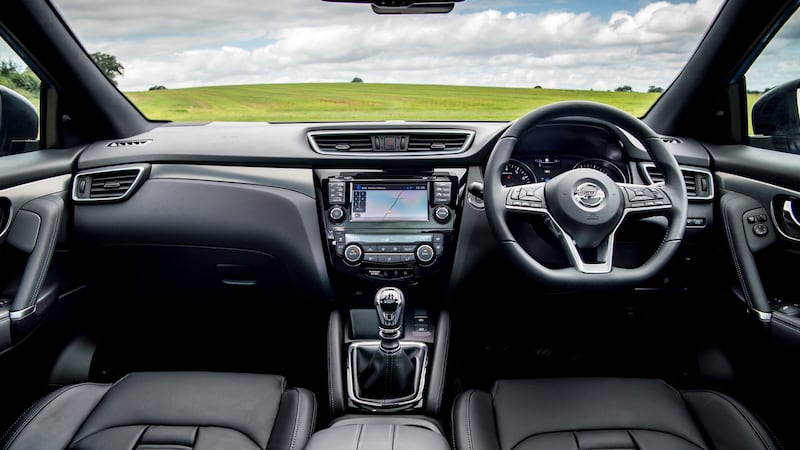Nissan's Qashqai has followed, almost to the letter, the predicted, proscripted path of the disruptor. It happens to them all. Johnny Rotten began celebrity life as the lead singer of The Sex Pistols, called the Queen a fascist, and then ended up wearing tweeds and flogging vaguely posh butter on daytime telly. It is the route that all must follow - rebellion, followed by normality, followed by senescence.
Has this already happened to the Nissan Qashqai? When originally launched in 2006, it was a disruptor of the highest form, a tall-roofed SUV amongst hatchbacks, replacing a car so dull (the Almera) that Nissan just couldn't bear to make it anymore.
It created something of a sales riot as school run parents suddenly realised that they could have Land Rover looks without the running costs. Nissan suddenly found itself sitting on a gold mine and, in 2014, it relaunched the Qashqai as a more sophisticated second generation car. More handsome at which too look, with a superior interior, it continued to sell incredibly well. More than three million Qashqais have found homes around the world, It's the fourth best-selling car in Europe, and the second-best selling car in Ireland (beaten here only by the Hyundai Tucson).
So, what now? The disruption is long since done. The Qashqai has elbowed aside all but a few of its traditional hatchback rivals, and has become the yardstick against which all other entrants to the midsize SUV and crossover segment must be judged. Indeed, Volkswagen recently decided to have the launch of its new T-Roc in the Portuguese town of Cascais. Pronounce that in a Portuguese accent and you’ll see what we mean… From ebullient newcomer to old man of the segment, what is the Qashqai now to do?

Hold steady, seems to be the answer. Nissan has given the Qashqai its de rigeur mid-life facelift and, clearly, the instructions came down from the top saying ‘don’t mess with success.’ Nissan has given the Qashqai a new face (the radiator grille is a little more bulbous now, and features metal-look ‘fangs’ like those of the new Micra), while there are other minor tweaks and adjustments inside and underneath. There is nothing here that will faze nor fuddle any previous Qashqai owner, though.
Useful changes
While much had been spoken of, pre-launch, about the Qashqai being one of the first Nissans to benefit from the company’s research into autonomous driving, the production model given to us to test was reassuringly/disappointingly (delete to your taste) normal. It did have a surround-view camera system, which can predict if a parking space is big enough but not steer you into it, and an autonomous braking function, the radar for which is neatly integrated behind the Nissan badge up front, but nothing else in the way of autonomous driving. Even the lane departure warning was a beep, rather than a robotic nudge of the wheel.
Still, there have been some useful changes. Nissan said that it wanted to make the Qashqai’s cabin look and feel more of premium standard, and it’s done so. The overall layout hasn’t changed, but the quality of the materials used has taken a distinct step up. The seats, originally designed with the help of NASA, remain among the better pews of any car you care to name, and in top-spec SVE form as tested here, come with a delightfully soft de-bossed leather wrapping. For an average family car, the Qashqai has above-average comfort.
Space
Not above average space, though. Even when launched, it was never the roomiest car in the world (we remember struggling to find space for a bulky child car seat in the original Mk1 Qashqai) and with an ever-growing list of competitors, the Qashqai is now feeling rather tight inside.
Certainly, rear legroom is vastly better in the VW Group triplets: the Seat Ateca, VW Tiguan, and new Skoda Karoq. And it's better in the Hyundai Tucson and Kia Sportage too. The Toyota C-HR and VW T-Roc offer marginally less space in the back, but hit back with rather more exterior style, so pay your money and take your chances. The Qashqai's boot, at 430-litres, is also starting to look a little small.
At least it remains good to drive. With the 1.2-litre TCe petrol turbo engine, it’s a touch underpowered (115hp and 190Nm of torque will do that) but it’s smooth, quiet, and returns a pretty solid 40-odd-mpg, which is not too bad for those looking to trade out of a diesel and into a petrol. The steering feels lighter and less well connected here than it would do in the heavier, heftier diesel, but the Qashqai’s chassis manners are beyond reproach - it’s stable, sure-footed, and once you get used to the over-light steering, you can actually have quite good fun with it.

It is starting to feel rather like a car which is throwing anxious metaphorical glances over its metaphorical shoulder. The market for such cars has become exceptionally crowded since 2007, and many of the Qashqai’s competitors are seriously talented.
You’ll have more fun driving a C-HR, for instance, and you’ll pack more people and chattels more comfortably into a Tiguan or Karoq. That’s not to say that the Qashqai has lost its way, exactly, nor diminished much in appeal, but that it hasn’t moved on much as others have caught up. The disruptor runs the risk of finding itself disrupted.
The lowdown: Nissan Qashqai 1.2 2WD SVE
Price: €34,320 as tested (Range starts at €26,070)
Power: 115hp
Torque: 190Nm
0-100kmh: 10.6 sec.
Top speed: 185km/h
Claimed economy: 48.7mpg (5.8 litres/100km)
CO2 emissions: 129g/km
Motor tax: €270
Verdict: Still impressive, but slipping back a little in the face of stiff competition
Our rating: 3/5















